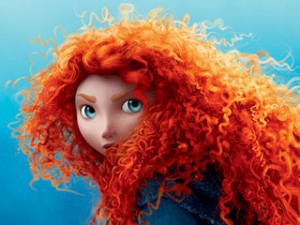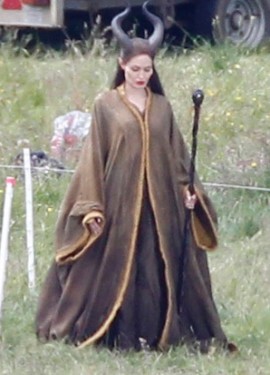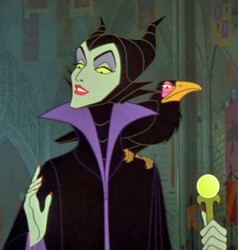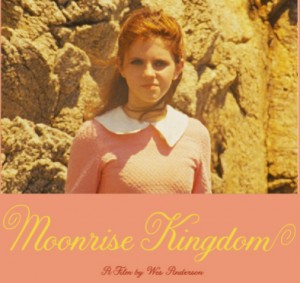Commentary 23 Jun 2012 05:36 am
Sarris & Scher & Assorted Other Things
 - When I was in the Navy, 1970 to be exact, I was stationed in Adak Alaska. Adak is a small island centrally located in the Aleutian Islands. There were 250 of us on the island, separated from the principal part of the base by seven miles. A very tough ride to make on days off – if weather allowed it. Not only did I feel separated from the real world, I was.
- When I was in the Navy, 1970 to be exact, I was stationed in Adak Alaska. Adak is a small island centrally located in the Aleutian Islands. There were 250 of us on the island, separated from the principal part of the base by seven miles. A very tough ride to make on days off – if weather allowed it. Not only did I feel separated from the real world, I was.
Out of the blue, one day, I received a wonderful little package. It was copy of Andrew Sarris‘ giant of a book, The American Cinema: Directors and Directions 1929-1968. Sarris was the film critic for the Village Voice. He had introduced America to the French idea, the auteur theory of film criticism. This theory flatly stated that it was the film’s director who authored movies.
Back then, this new idea was mocked. It was easy to appreciate such thoughts about Europeans like Bergman, Truffaut or Rossellini. But how ridiculous to bestow entertainers like Hitchcock, Ford or Hawks with such esteem.
During the 60s, 70s & 80s, Sarris and Pauline Kael conducted bitter and open arguments about film theory. John Simon and Stanley Kaufman were often participants in these debates which often lifted the evaluation of many films and made film theory and criticism almost an art in its own rite.
I, personally, was just beginning to shape my thoughts about film. Sarris came to me at the perfect time. The book was broken into a number of categories like “Pantheon,” “Expressive Esoterica,” or “Less than meets the eye.” Within these categories some 200 American film directors are ranked, and more than 6000 films are evaluated. I didn’t know who many of the directors were nor had I even heard of the majority of the films.
However, I was so taken by the book’s content that I reread it at least a half dozen times – over and over and over. Having consumed the book, I rushed back to it as reference any time I saw a film or read about a director. I just about memorized what Sarris had to say about many many American film directors. What’s more I often agreed with Sarris as my opinions grew stronger.
The book directed me to a full knowledge of American cinema and a strong appreciation of its history. First I have to thank my friend, jim Weslowski, for sending me the book, but, foremost, I thank Sarris for all the information and film theory he’s given me.
I write this only a couple of days after Andrew Sarris has died of complications from an infection after a fall. Reading this news disheartened me. He was among the “Pantheon” of film critics. He didn’t resort to thumbs up or down; he turned to words which could help educate us about the Art of Film. Everything smart and good seems to be passing.
- I’ve been reading the local reviews of Brave and have found hem interesting. They seem to break into two types:
there are those that casually give it 2 or three stars and add another 500 words.
Then there are those that go into depth and analyze the film’s story and substance, including all the elements that make up the film.
It would seem that those who give the film more space seem to like it more than the quick-star reviews.
The two I particularly liked were Manohla Dargis’ review in the NYTimes.
 “The riotous mass of bouncy curls that crowns Merida, the free-to-be-me heroine of the new Pixar movie, “Brave,†is a marvel of computer imagineering.”
“The riotous mass of bouncy curls that crowns Merida, the free-to-be-me heroine of the new Pixar movie, “Brave,†is a marvel of computer imagineering.”“Merida is active instead of passive, a doer rather than a gal who hangs around the castle waiting for Prince Charming to rescue her. More to the point and to the movie’s marketing, she is Pixar’s first female protagonist, which means that there’s a lot more riding on her head than that ginger mop.”
“Merida doesn’t dream that her prince will come; she doesn’t have to because it’s clear that, within the logic of the movie, the alternative is comically unthinkable. It’s no great surprise that she wins the struggle to determine her fate. But hers is a contingent freedom won with smiles, acquiescence and a literal needle and thread with which she neatly sews up the story, repairing a world where girls and women know exactly where they stand. “
and Melissa Anderson‘s review in the Village Voice.
- “Advancing the story’s Grimm-like grimness is a suitably dark color palette, hues that sometimes suggest Rorschach inkblots. For all female audience members with memories of their struggles of individuation from their mothers, Brave is its own kind of psychological projective test. But again, as convention dictates, these almost-unbearable horrors—a child’s guilt over turning a parent into something unrecognizable, of “destroying” her family—are quickly ameliorated, as Merida sets out to ‘mend a bond torn by pride.’ “
- The indomitable animation artist, Jeff Scher, has a new OpEd piece on the NYTimes. Summer Sketches. To quote Jeff: “Water is the most animated substance on the planet, and when I’m not drawing it or painting with it (watercolor) I often find myself photographing it.” Water, this is the heart of the film.
I’m a bit disappointed that the score is not by Shay Lynch – Mr. Scher’s pieces have brought me two artists, both Jeff Scher and composer, Shay Lynch. However, this score is taken from “. . . the first movement of Viktor Ullmann’s Piano Sonata No.7, performed by the concert pianist — and my old friend — Paul Orgel.” Orgel was killed in Auschwitz by the Nazis in 1944, and this sonata was never completed.
The film is short, take a look.
- There was a shot of Angelina Jolie photographed as Maleficent this past week. However it was a tight closeup that didn’t reveal very much. Then the newspapers offered more in the photos on Friday. The pics were from a British tabloid, so they’ve no doubt, been circulated. The one, above, was among them.
The brown costume seems wrong to me, but what do I know? As a matter of fact, another fairy tale named after the villain of the piece tells me a lot about how they’re all going wrong. A bunch of poor movies. Disney, rerelease Sleeping Beauty in 70mm and save yourself a lot of money instead of making a vanity piece for Ms. Jolie.
- I wrote a bit about Brad Bird the other day.
Harvey Deneroff has a good interview with him on
his site, harvey@deneroff.com.
The interview was conducted when The Iron Giant had just started production.
- On his site, Oswald Iten writes about Wes Anderson‘s animation for Moonrise Kingdom. It seems that the producer, director of The Fantastic Mr. Fox, is still in love with animation. In his new film, Moonrise Kingdom, his character reads aloud short snippets of several books she’s been reading. Originally, Anderson had planned just to show the books produced for the film, but ultimately he decided – regardless of the fact that they are not seen in the film – to animate the story bits. Here‘s the link to the animation.
I haven’t seen this information elsewhere, so I’m glad I read it on Oswald’s blog. He also writes in another post about the Anderson film, and its well worth reading (especially if you’re a fan of Mr. Anderson’s work.)





on 23 Jun 2012 at 7:25 pm 1.anik said …
The Auteur theory and “Brave” in the same post brings to mind the current state of feature animation. It seems to me that while live-action films range on the auteur-blockbuster spectrum, in animation (with a very few exceptions – mostly European) there are just the two extremes: independent no budget features and big studio top budget ones.
Both have problems. Independent animated features almost entirely made by one person often suffer from “lack of fresh air” and feel like a result of long solitary confinement. Big studio features offer none of that intimacy and glimpse into a unique world – they are variety shows catering to every taste all in one package. The problem with this is, first, it feels fake and patronizing: “yes, we know, you were just wowed with an amazing action sequence, now you are ready for a little emotional moment. OK, now before it got too awkward – a joke. OK, the boys are happy, now let’s please the girls. And lets not forget the adults.” Second, it becomes very predictable: we may not know all the jokes and story turns in advance, but we know the pattern, it’s all comes from the same recipe. Can this ever be an ancient Greek myth without the jokes, or a humorous story about growing up without any magical creatures, or any other concept with a unique spirit? Why there seem to be more live-action films with some sort of personal creative vision and decent production values, but in animation for the most part it’s either one or the other?
on 23 Jun 2012 at 9:41 pm 2.The Gee said …
Michael Sporn wrote:
“Having Merida shout “Shut it!†to silence everyone in the room pulled me right out of the 13th century and into 2012. This happens several time. Anachronisms are a problem with people who are writing for animtion these days. Can’t they stay true to the world the characters live in? I don’t quite understand the difficulty except for immature writing.
“The film’s a visual stunner showing us where cgi is going. The story is absorbing for the first hour or so; then it turns to animation clichés. A very fine effort with a bad title that had nothing to do with the film.â€
This was posted on Cartoon Brew. I hope you don’t mind if I repeated it here.
I’ll leave this as the comment and wish to follow up on it in another separate comment. However, if you don’t want your words repeated, you can delete this.
on 23 Jun 2012 at 9:48 pm 3.The Gee said …
Anik,
How does Chomet fit into what you are writing? Or Miyazaki?
As directors who seem to define their films more than the films being made by committee or with what is essentially studio interference or marketing concerns.
Or, am I wrong that there are big compromises that show up in those two directors’ films????
….well, I’m curious….
especially since because I haven’t watched a lot of films from either ( I know shame on me. But, that’s my loss, I suppose)
on 23 Jun 2012 at 11:05 pm 4.The Gee said …
About the writing and the dialogue of “Brave 
I haven’t seen it yet; still don’t know if I will. (now that I think about it, I guess net-tiquet dictates I should have written “Spoiler†in the above quote. Sorry.)
I have read what was commented on on CB and am not really worried about being spoiled.
There’s narration? Based on what was wrote about anachronisms in the film, I hope the narration is not too much. As I wrote on an earlier topic, in “Ratatouille†I thought the narration/monologues were too much.
The VOs in the sequence where they are exploring tastes, the one Michel Gagne did fx on, is alright. It’s actually quite clever, in my opinion. Remy (?) was speaking over jazz music. That almost never fails if done. But, it was still too much yakking by him throughout the movie, for my tolerance levels.
So, in Brave, are the anachronisms the only part were the writing falls short? I don’t mean writing in relation to how the story plays out but writing in what the audience hears.
hope that makes sense.
on 24 Jun 2012 at 2:04 am 5.anik said …
You are right, the Gee, there are exceptions.
on 25 Jun 2012 at 12:18 pm 6.Joey P. said …
It always did annoy me that the Siskel & Ebert imitators took away nothing but the star/thumb ratings and the heated arguments but not the intelligent debate or critical analysis.